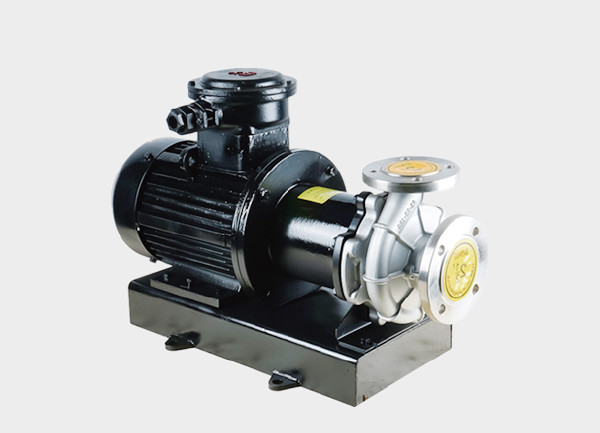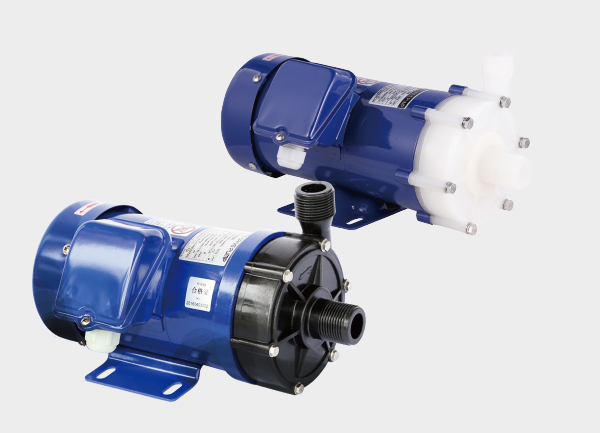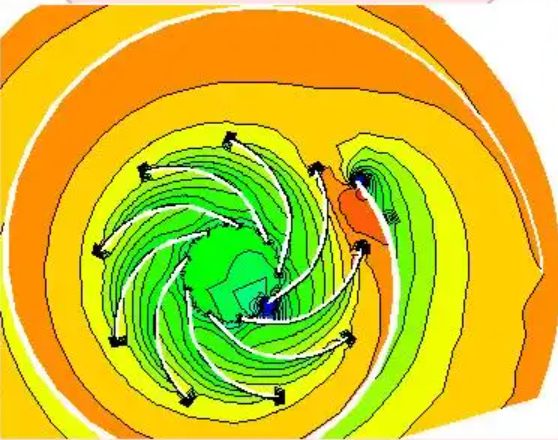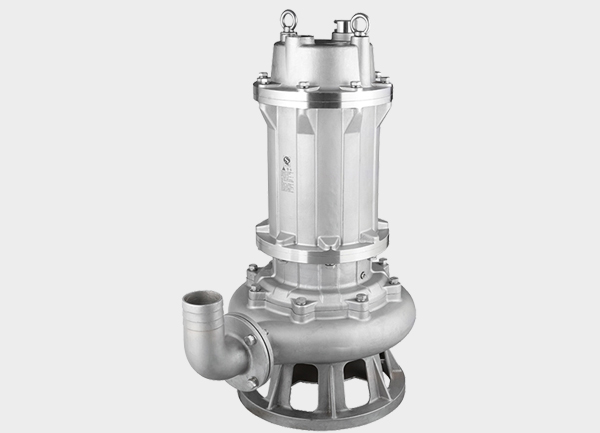A sealless magnetic pump delivers a groundbreaking solution to one of the toughest challenges in fluid transfer — achieving zero leakage through non-contact magnetic drive technology. Instead of relying on mechanical or packing seals, the pump transmits torque through a magnetic coupling, ensuring a fully enclosed flow path. Its value lies in three core aspects: reliability of sealing, adaptability to harsh operating conditions, and ease of maintenance.
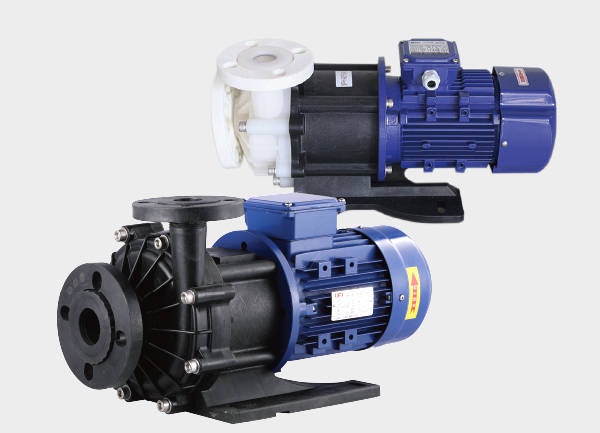
This article provides a detailed explanation in two sections:
I. Working Principle (In-depth Analysis)
II. Core Advantages (Comprehensive Overview)
I. Working Principle: Non-Contact Magnetic Coupling for Power Transmission
At the heart of a sealless magnetic pump is the magnetic coupling, which replaces the traditional mechanical seal, allowing the motor’s power to drive the impeller through a magnetic field—without any physical contact. This eliminates leakage and ensures complete isolation of the pumped medium. The process can be broken down into three key stages, involving several critical components working in perfect synchronization.
1. Core Transmission Mechanism: “Outer Magnet → Magnetic Field → Inner Magnet”
Traditional centrifugal pumps transmit power mechanically via a shaft and couplings. By contrast, a magnetic pump achieves contactless torque transmission through the interaction of rotating magnetic fields.
Power Input – Outer Magnet Rotation
When the motor starts, it drives the outer magnetic assembly, composed of rare-earth magnets (typically neodymium iron boron or samarium cobalt) arranged in alternating poles. This assembly generates a rotating magnetic field around it.Magnetic Field Penetration – Isolation Shell as a Non-Magnetic Barrier
Between the outer and inner magnet assemblies is a containment shell made of non-magnetic material (e.g., Hastelloy, fluoroplastic, or ceramic). It serves as a physical barrier, completely isolating the fluid from the motor while allowing magnetic flux to pass through freely. (Magnetic fields can penetrate non-magnetic materials, just as a magnet can attract metal through glass.)Power Output – Inner Magnet Synchronization
The inner magnetic assembly, fixed to the impeller shaft and aligned in polarity with the outer magnet, is pulled by the rotating magnetic field. When magnetic synchronization is achieved, the inner magnet rotates at the same speed as the outer one—driving the impeller to circulate the fluid.
🔹 Key Concept: Magnetic synchronization relies on pole alignment—the N and S poles of the outer and inner magnets attract each other continuously during rotation, ensuring torque transfer without physical slip.
2. Key Components and Their Roles
| Component | Material Characteristics | Function in Power Transmission |
|---|---|---|
| Outer Magnet | Rare-earth magnet (NdFeB / SmCo) | Generates the rotating magnetic field — “Power Source” |
| Inner Magnet | Same material, polarity-matched | Follows the magnetic field — “Power Receiver” driving the impeller |
| Isolation Shell | Non-magnetic material (metal or non-metal) | ① Physically seals fluid inside the pump chamber ② Resists corrosion ③ Allows magnetic flux transmission |
3. Energy Phenomenon: Eddy Current Loss (Why Efficiency Is Slightly Lower)
Because the containment shell is surrounded by a rotating magnetic field, eddy currents may form due to electromagnetic induction — similar to how an induction cooker heats metal cookware. This results in minor energy loss as heat, reducing overall efficiency by about 5–8% compared with traditional pumps.
To minimize this effect, the isolation shell is made from low magnetic permeability and high resistivity materials, such as fluoroplastics, ceramics, or high-resistance alloys (like Hastelloy).
II. Core Advantages: Eliminating Leakage and Expanding Application Boundaries
Sealless magnetic pumps are engineered to address the weaknesses of traditional mechanically sealed centrifugal pumps—notably, leakage, frequent maintenance, and limited material compatibility. Their strengths can be summarized in five key dimensions:
1. Zero Leakage — The Ultimate Sealing Solution
This is the most defining advantage of magnetic pumps.
Conventional Pumps: Rely on mechanical seals (rotating and stationary rings) to prevent leakage, which deteriorate under wear, corrosion, or temperature variations, often leading to seal failure and hazardous leaks.
Magnetic Pumps: Eliminate the need for any mechanical seals. The fluid is fully enclosed within the sealed containment shell, ensuring absolute leak prevention—a critical safety feature for handling toxic, corrosive, or flammable media such as cyanide, hydrochloric acid, methanol, and ethanol.
✅ Ideal for industries governed by strict VOC and hazardous chemical regulations.
2. Exceptional Corrosion Resistance — Built for Harsh Media
All wetted parts are material-customizable to match specific fluid properties:
| Medium Type | Recommended Materials | Feature |
|---|---|---|
| Strong acids (e.g., 98% sulfuric acid, HF) | Fluoroplastics (PTFE, FEP) / Ceramics | Excellent chemical resistance, smooth surface prevents scaling |
| High-temperature corrosive media (≥200°C) | Hastelloy C276 or Titanium + SmCo magnets | SmCo magnets resist temperatures up to 350°C |
| Ultra-pure or sanitary fluids | 316L stainless steel / Ceramic | Prevents metal ion contamination, maintains purity |
With optimized material matching, service life increases 3–5 times over conventional pumps.
3. Enhanced Safety and Environmental Compliance
Magnetic pumps are inherently safer and environmentally compliant:
Explosion-Proof Design: Can be equipped with explosion-proof enclosures and motors (Ex d IIB T4).
No Friction Sparks: Since there’s no physical contact between magnetic components, no risk of ignition when pumping flammable fluids.
Environmental Compliance: Prevents toxic vapor emissions (VOCs) or soil/water contamination, fully meeting environmental and safety standards like EPA and OSHA equivalents.
4. Low Maintenance Cost — Fewer Downtimes, Longer Service Life
Traditional pumps require mechanical seal replacement every 3–6 months, causing costly downtime. Magnetic pumps, however, are almost maintenance-free:
No seal replacement or lubrication needed.
Bearings (typically silicon carbide or graphite) are lubricated by the pumped medium itself.
Maintenance checks focus on vibration (<4.5 mm/s), temperature (within +10°C of medium), and flow — reducing downtime by over 80%.
5. Purity Assurance — For High-Cleanliness Applications
In industries such as pharmaceuticals, food, and semiconductors, purity is critical. Magnetic pumps excel due to:
No secondary contamination: No seal wear debris, no dead zones in flow path.
Certifiable sanitary designs: Can meet FDA, GMP, and ultra-pure water (18.2 MΩ·cm resistivity) requirements.
Conclusion: The Logic Behind “Principle → Advantage”
The advantages of a sealless magnetic pump are a direct result of its working principle:
Magnetic coupling + containment shell → Achieves zero leakage and high safety
Custom material configuration → Enables corrosion resistance and purity protection
No mechanical seals → Reduces maintenance cost and downtime
This tight link between design principle and performance benefit positions sealless magnetic pumps as the next-generation replacement for traditional sealed pumps — particularly in fine chemicals, pharmaceuticals, and new energy industries, where safety, purity, and reliability are non-negotiable.



